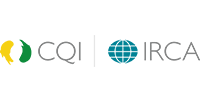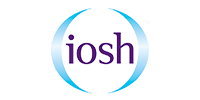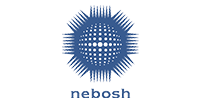ISO/IEC 17025
Competence of testing and calibration laboratories
What is ISO/IEC 17025?
ISO/IEC 17025:2017 specifies the general requirements for the competence to carry out tests and/or calibrations, including sampling. It covers testing and calibration performed using standard methods, non-standard methods, and laboratory-developed methods.
It is applicable to all organizations performing tests and/or calibrations. These include, for example, first-, second- and third-party laboratories, and laboratories where testing and/or calibration forms part of inspection and product certification.
ISO/IEC 17025:2017 is applicable to all laboratories regardless of the number of personnel or the extent of the scope of testing and/or calibration activities. When a laboratory does not undertake one or more of the activities covered by ISO/IEC 17025:2017, such as sampling and the design/development of new methods, the requirements of those clauses do not apply.
ISO/IEC 17025:2017 is for use by laboratories in developing their management system for quality, administrative and technical operations. Laboratory customers, regulatory authorities and accreditation bodies may also use it in confirming or recognizing the competence of laboratories. ISO/IEC 17025:2017 is not intended to be used as the basis for certification of laboratories.
Compliance with regulatory and safety requirements on the operation of laboratories is not covered by ISO/IEC 17025:2017.
Main Benefits of Correctly Implemented ISO/IEC 17025
Implementing ISO/IEC 17025 as part of laboratory quality initiatives provides benefits for both, laboratory and business, such as:
- Having access to more contracts for testing and/or calibration. Some public and private organizations only give contracts to accredited laboratories. Accreditation will also help in getting more contracts from organizations that don’t mandate accreditation, but do give preference to accredited laboratories in competitive situations
- Improved national and global reputation and image of the laboratory
- Continually improving data quality and effectiveness of the laboratory
- Having a basis for most other quality systems related to laboratories, such as Good Manufacturing Practices and Good Laboratory Practices
Analytical testing laboratories seeking ISO/IEC 17025 will be affected in multiple areas. The main difference between good analytical practices and formal accreditation is the amount of documentation to be developed. There is no doubt that any good analytical laboratory uses qualified analysts, checks the performance of equipment used for testing, and validates analytical methods. However, many times the outcome of the tests is not fully documented. ISO/IEC 17025 accreditation requires formal documented environment and is viewed by assessors.
Key Steps towards Accreditation
There are eight key steps towards laboratory accreditation:
- Management defines a project owner
- The project owner studies details of the standard, supporting literature, and other relevant information
- The project owner defines the preliminary scope of accreditation, and works with laboratory professionals to prepare a list with requirements
- The project owner and laboratory professionals perform a gap analysis to determine the difference between the requirements and what is currently implemented in the laboratory
- Based on the outcome of the gap analysis, the project owner, laboratory professionals, financing and documentation professionals, and external consultants estimate the costs for accreditation.
- Estimated costs are presented to management, along with incremental opportunities.
- Management decides to proceed with accreditation.
- The project owner leads implementation steps.
ISO/IEC 17025 - Laboratory Quality System
Laboratories play an important role in company quality systems. The ISO/IEC 17025 (1) can be used as a standard to develop and establish a quality system for a laboratory, and also for assessment by laboratory clients or third parties. The standard can also be used as a criterion for laboratory accreditation. Working according to global standards is especially important for laboratories to ensure validity and global comparability of test & calibration results. One of the goals of using global standards is to reduce the number of tests required in national and international trading.
The first edition of the “International Standard General Requirements for the Competence of Testing and Calibration Laboratories” was produced as a result of extensive experience in implementing ISO/IEC Guide 25 and EN 45001; it replaced these earlier standards in 1999. This new standard contains all the requirements that testing and calibration laboratories have to meet if they wish to demonstrate that they operate a management system, are technically competent, and are able to generate technically valid results.
Management requirements in the first edition refer to ISO 9001:1994 and ISO 9002:1994. These standards have been superseded by ISO 9001:2000, which made an update of ISO/IEC 17025 necessary. In the second edition of ISO/IEC 17025, released in 2005, clauses were amended or added only when considered necessary in the light of ISO 9001:2000.
Testing and calibration laboratories that comply with ISO/IEC 17025 will, therefore, also operate in accordance with ISO 9001.
Accreditation bodies that recognize the competence of testing and calibration laboratories use ISO/IEC 17025 as the basis for their accreditation.






